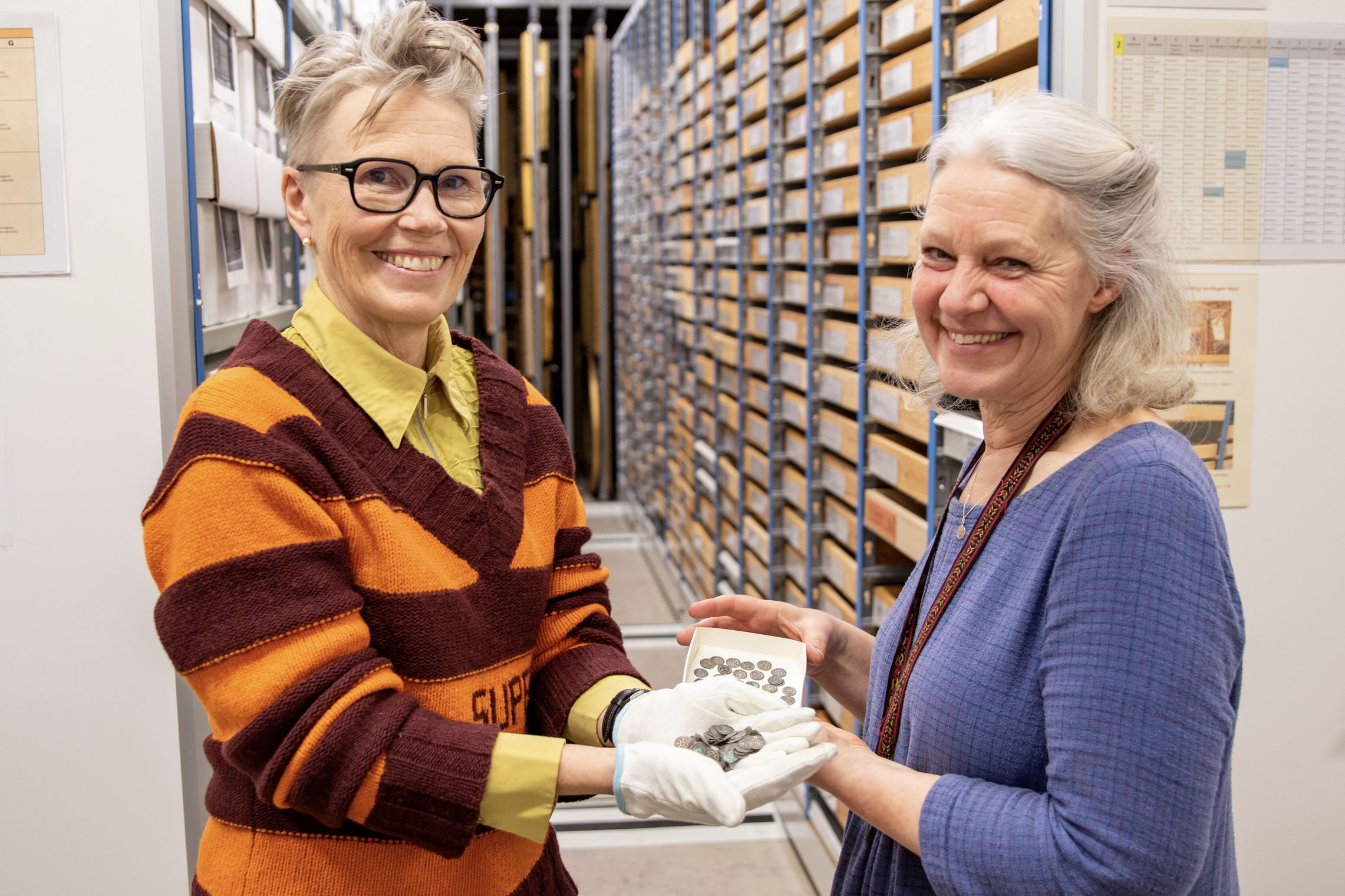
A trove of silver coins from the Middle Ages turned up unexpectedly in a Lutheran church on a Swedish island, puzzling archaeologists. The Jönköping County Museum announced the find, recounting both the story of the buried treasure’s discovery at Brahe Church, as well as archaeologists’ first estimates at explaining the anomalous gravesite, situated on the historic island of Visingsö, in Lake Vättern.
One of the coins discovered at Brahe, the Swedish church on the historic island of Visingsö. Photo: Jönköping County Museum
This “sensational find” would not have come to light had Brahe Church not set out to install geothermal heating. The county museum’s archaeologists showed up to oversee the necessary excavations. According to project manager and archaeologist Anna Ödeen, graves were uncovered in the shaft where the wires were to be laid. Then team noticed three silver coins, before discovering the full trove of 170.
Kristina Jannson excavating at Brahe, the Swedish church on the historic island of Visingsö. Photo: Jönköping County Museum
The hoard of 170 newfound silver coins were likely owned by the man buried alongside it. The artifacts are specifically Bracteates, thin coins produced, in this instance, in German-speaking Saxony and Thuringia, Heritage Daily noted. They are all emblazoned with insignias, some of which have never been seen or recorded before. The full cache is estimated to hail from the Middle Ages, about 1150 to 1180 C.E., which is the very time period in which Visingsö was the seat of the fragile Swedish monarchy.
A selection of the coins found at Brahe. Photo: Åsa Rosén
Ödeen elaborated over an email to Artnet News that it is rare to discover such riches because “there was a period during the early Middle ages when Sweden (or what we call Sweden today) didn’t mint many coins.” However, the coins started circulating again around 1150. This was the same time that Sträja Church, which predates Brahe Church, was built to replace the earliest wooden place of worship.
Brahe was originally called Wisingsborg Castle Church and was constructed in 1623 to 1636 as a show of power by the renowned local noble family of the same name. The exterior might be unassuming, but its Baroque interior features “incredibly rich decoration,” the Swedish church noted, which “cannot be described but must be experienced.”
Brahe Church. Photo: Jönköping County Museum
Eeva Jonsson of the Royal Coin Cabinet, an economic museum over 180 miles northeast in Stockholm, noted in a statement that the discovery “will change the early medieval coin history in Götaland and shed light on a period that is largely completely unknown.” Ödéen added that she and the team of archaeologists studying the remains are excited to piece their puzzles together.
The coins went on display at the Jönköping County Museum for a few days after Easter, then headed off for conservation. Research is underway to determine not only the coins’ origins, but also why this young man brought them to the grave, and how he got them in the first place.
Ödéen noted that there are already theories. Though the 170 coins were a healthy fortune in their time, their former owner probably wasn’t rich. One thesis, she said, is that he was some kind of merchant, perhaps with the haul from a sale. For now, their methods, and the answers to this mystery, all remain to be seen.